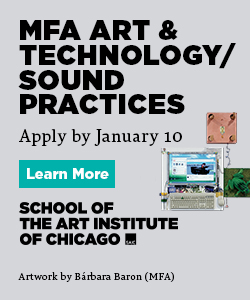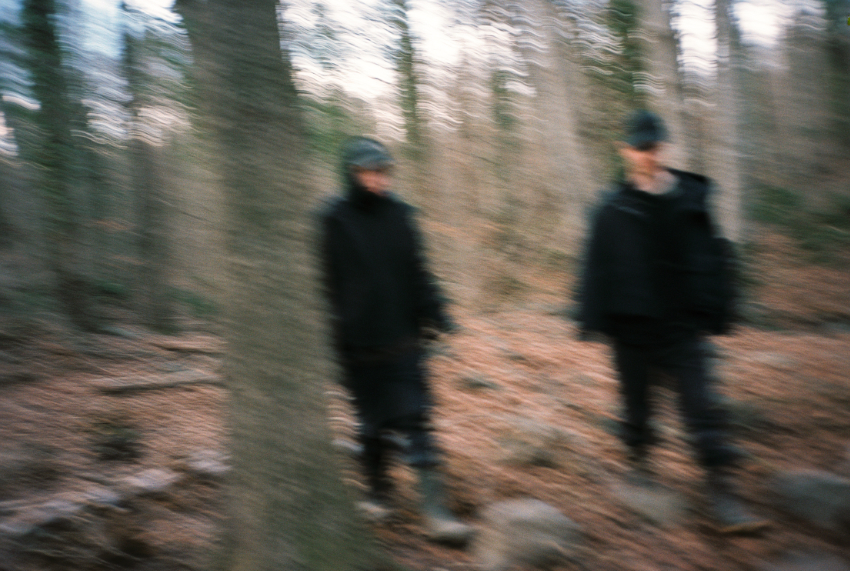Words by Lula Criado

The work of visual artist and curator Marta De Menezes, who creates artworks that literally live and die, combines biology and art. Menezes, crossing between the disciplines of art and biology for her own artistic purposes, has been exploring the intersection of art and biology since the late nineties when, during the final years of her art degree, she met Luis Graça. Graça, who was a PhD candidate at the medical school, introduced Menezes to scientists and their scientific universe.
Nature?, developed in 2000 at the laboratory of Professor Paul Brakefield (University of Leiden, Holland), was her first example of using biology for artistic purposes to create artworks with a lifespan. In Nature?, Menezes induced a scarified pattern in one of the wings of two species of butterflies. The modification that affects the colour and design of the wing is not a genetic modification; it was made by using cauterising tools, so as the genes remain unchanged, the pattern is not transmitted to the offspring. When the butterflies die, the artwork dies with them.
In Tree of Knowledge (2005), Menezes created live sculptures through the use of tissue culturing and live neurons, and in Decon: Deconstruction, Decontamination, Decomposition (2007), a homage to Piet Mondrian geometric paintings, she utilized bacteria as a medium to explore the use of biotechnology.
The artwork, a metaphor for the life cycle in which all living beings are destined to die and decompose, is a series of paintings that are degraded by Pseudomonas putida bacteria while exhibited. Last but not least, Tetrahymena, an ongoing project in collaboration with Dr Isabel Gordo, aims to explore the concept of gender, preconceptions and behaviours through the use of living organisms such as Tetrahymena as an art medium.
Marta de Menezes re-appropriates biology imaginary, from techniques and living organisms to genetic material, and uses them as an art medium to create beautiful and thought-provoking artworks. Butterflies, live neurons, chromosomes, tissue culture, fMRI, DNA microarrays or DNA paint are words that sound familiar to us after having been in contact with her creative universe.
Menezes is also the director of Ectopia, which aims to promote collaborative projects at the intersection of art and science. In collaboration with scientists, it is conducted at Instituto Gulbenkian de Ciência in Oeiras (Portugal), where artists can access biomedical research.


You are a visual artist working in the intersection of art and science; when and how did the fascination with biological systems come about?
I was in the final years of my painting degree when I started dating an old friend of mine, Luis Graça, who is now my husband. He was starting a PhD program after finishing medical school, and to be with him, I would invariably be going out with his PhD colleagues and professors, listening to a lot of science and biology in particular. This was when I became increasingly involved in biology research questions and possibilities of interaction and collaboration between the two areas.
In the early 1920s, Cubism helped physicist Niels Bohr to determine the quantum theory when he compared the behaviour of electrons with the Cubist paintings. But, in your view, what is the contribution of science to the arts?
In my view, the contribution between the fields as a linear two ways stream feels like a trap set up by policymakers to try and justify funds by setting up quantitative evaluation criteria. They are possible to navigate but very limited in what we can and should be trying to achieve. It seems to me that art must contribute to art and add new knowledge to its field. Science must contribute to science and add new knowledge to its own pool of knowledge.
However, borders do not limit knowledge and fields. Knowledge is there, and it is meant to be taken and expanded on. So if an artist takes from the scientific pool of knowledge and if a scientist takes from the knowledge pool of art, there will be a richer and more in-depth use of knowledge to generate uncharted new knowledge for whatever field your research is in. The problem seems to occur when the artist needs to go into the scientific space and use the equipment, then, it may seem that the artist should contribute for scientific knowledge, but I don’t think this is well thought of.
Bioart is blurring boundaries between art and bioscience and exploring laboratory practices as an artistic medium. Is bioart helping understand scientific issues (or practices), or is it challenging what society understands about them?
I don’t think that bioart aims to explore laboratory practices as an artistic medium. The technique does not make the work and does not generate meaning by itself. The practice in the laboratory is not the focus of art, and it shouldn’t be.
The policies around scientific knowledge and how to apply it are what can be and should be put in question, but there is a lot of art that doesn’t have its main focus on policies and politics. I think bioart is an open field of research that still has and will have much to add to the methodologies, mediums and practices of art for a long time.
Still, I feel that you are reducing it to only one line of research if you base your assumptions on laboratory practice as a medium. How can methodology and practice be a medium? Whether bioart is helping or challenging what society understands about scientific issues/practices depends entirely on the art project itself and the concept/idea behind it.
What are your aims as a bio artist working between science and art?
My aim varies from artwork to artwork. The concept changes, and the ideas evolve. I am an artist; I make art, research, and contribute to my field of research, which is art research as practice. As a bioartist, I chose to do all of these things. As an artist, I work collaboratively with scientists and expect them to do the same as I do in their field of work.
As a curator, what would it be your biggest curating extravaganza?
I don’t know. I think of curatorial projects very much, as I do art projects. The concept drives the research and the production of it. They are always extravaganzas because I aim high and always want to do the best exhibition on those subjects!
What is your chief enemy of creativity?
Boredom.
You couldn’t live without…
Books; this is the one item I always bring with me where ever I go.






